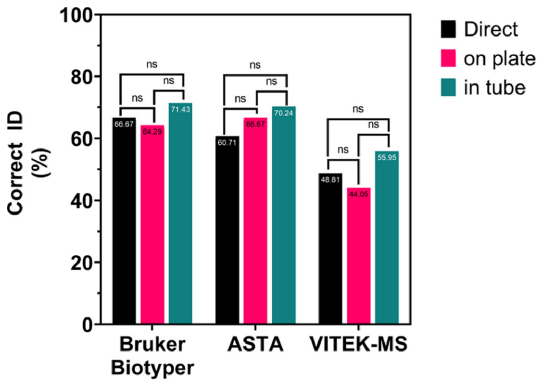Filamentous fungi (molds) are a major cause of life-threatening infections in immunocompromised individuals. Hence, there is an urgent need for their rapid and accurate identification. While matrix-assisted laser desorption ionization-time of flight mass spectrometry (MALDI-TOF MS) has demonstrated high sensitivity in this respect, its clinical applicability is limited by lack of data and standardization. Now, researchers have evaluated the clinical performance and accuracy of various MALDI-TOF MS approaches for the diagnosis of mold infections.

Image Credit: Chung-Ang University
In recent years, filamentous fungi or molds have emerged as causative agents underlying life-threatening infections in immunocompromised individuals. The timely management of these infections requires the rapid and accurate diagnosis of mold in clinical settings.
Unfortunately, traditional methods are time consuming, given the long incubation periods required to culture and examine molds. On the other hand, advanced molecular techniques are more sensitive and efficient. One such technique that can detect filamentous fungal isolates with high-sensitivity and reproducibility, is “matrix-assisted laser desorption ionization-time of flight mass spectrometry (MALDI-TOF MS)”. It can differentiate between samples based on variations in mass and charge. However, it is not widely used due to limitations in database availability and a lack of standardized procedures.
Recently, a team of researchers from Chung-Ang University, Republic of Korea led by Professor Mi-Kyung Lee, evaluated three different MALDI-TOF MS approaches used in domestic clinical settings, for the identification of molds.
In their study published in The Journal of Clinical Microbiology on October 26, 2022, they compared the performance and diagnostic accuracy of the Bruker Biotyper, ASTA MicroIDSys, and Vitek MS. They also assessed the sensitivity of three pretreatment methods— “direct”, “on plate”, and “in tube”—using 84 filamentous fungal isolates.
Explaining the rationale behind their study, Prof. Lee remarks, “Selecting an appropriate sample preparation method can improve the efficiency and accuracy of mold identification. Additionally, the development of systemized processes at the diagnostic level can ultimately contribute to effective treatments for patients”
The study found that the Bruker Biotyper identified 71.43% of isolates correctly up to the species or genus level, while ASTA MicroIDSys and Vitek MS demonstrated accuracy rates of 70.24% and 55.95%, respectively. Furthermore, the direct method for sample preparation was favorable over the other two methods, owing to its simplicity and ease of application. Notably, identification sensitivity did not differ significantly across different sample preparation methods.
The rate of misidentification is an important consideration in clinical laboratories because it can lead to inappropriate treatment interventions for patients. In this study, only one isolate was misidentified using Vitek-MS with the on-plate method. Moreover, the species level identification of Aspergillus (a highly prevalent and clinically significant microorganism) was highest through Vitek-MS, indicating the applicability of this technique in clinical settings.
The number of incorrectly identified species were 17, 15, and 23 through the Bruker Biotyper, ASTA MicroIDSys, and Vitek MS, respectively. The team suggested the need for additional evaluations if misidentification occurred due to the absence of certain species in the library rather than an error. Furthermore, the team determined that any differences in sensitivity could be attributed to differences in the system databases.
In summary, MALDI-TOF MS is a valuable technique that can accurately identify clinically significant microorganisms in a timely manner. Process standardization and guidelines that can be applied to a wide range of species can help reduce the process bias occurring through these techniques. Additionally, limitations related to acquisition parameters, matrix quality, and hardware require further assessments.
When asked about the applications of the study, Prof. Lee says, “Our study is the first to compare the sensitivity and accuracy of three MALDI-TOF MS instruments as well as the efficacy of three pretreatment methods for filamentous fungal identification. Accurate results obtained through a simple and streamlined process for mold identification using MALDI-TOF MS could improve laboratory work efficiency for users and treatment efficiency for patients.”